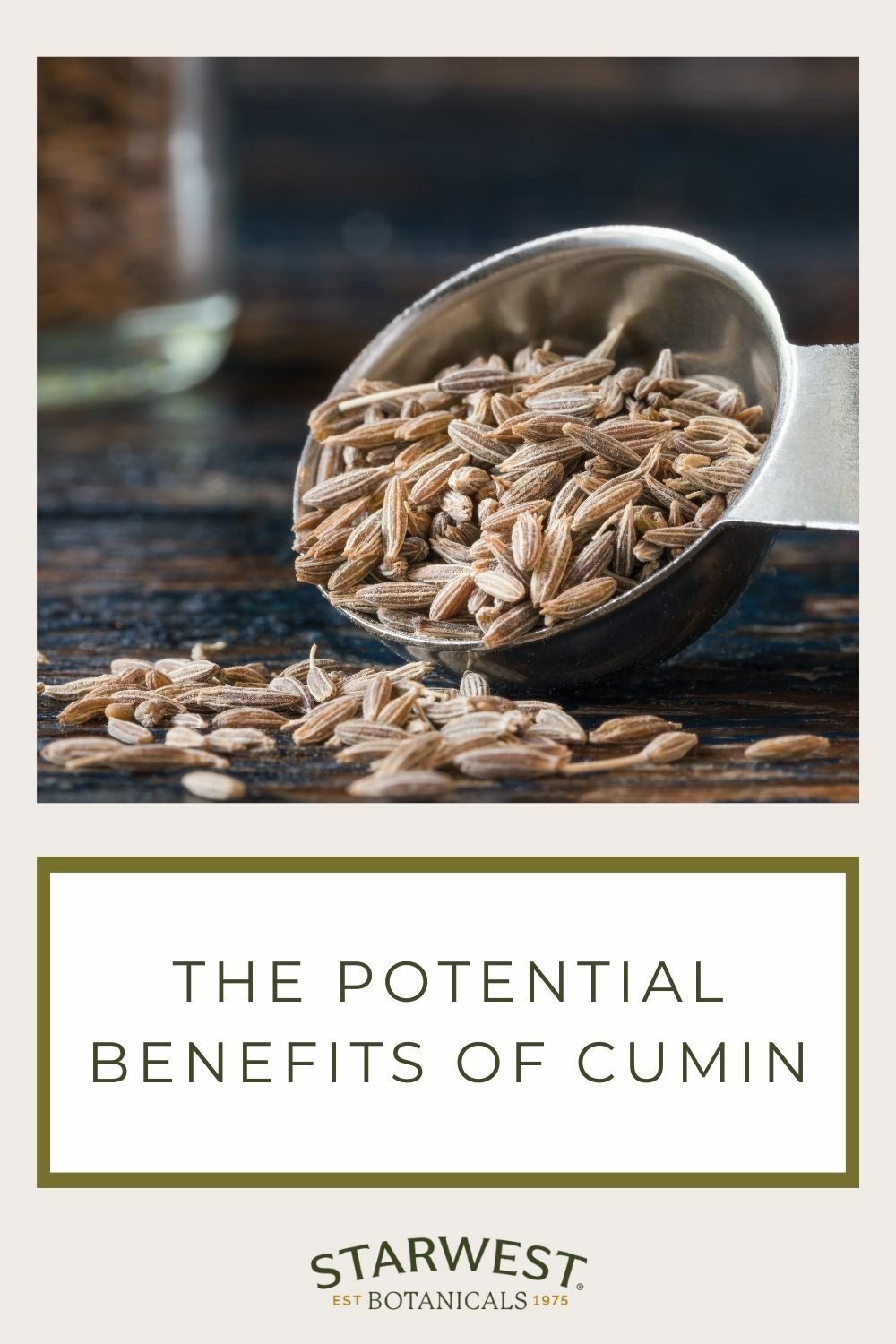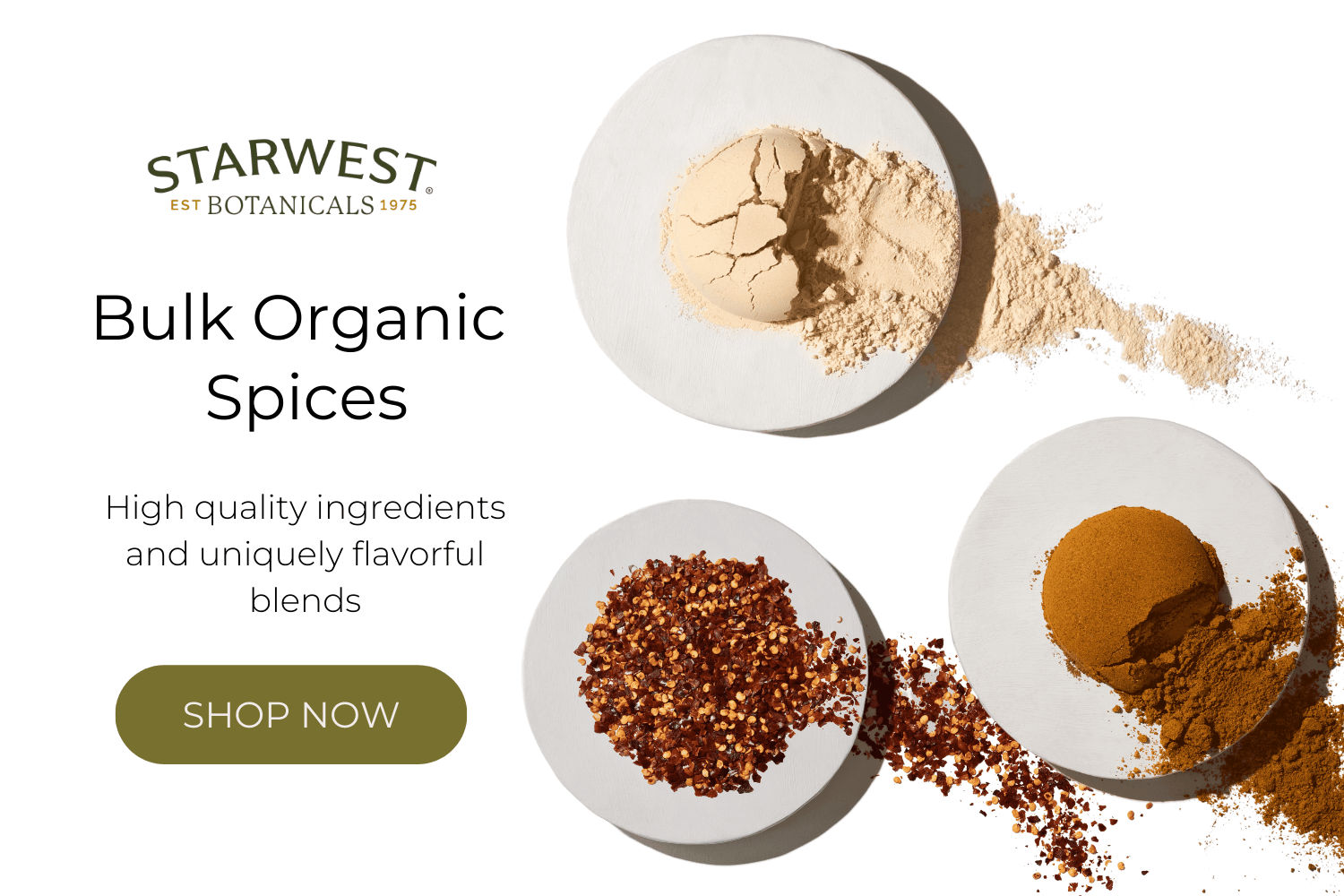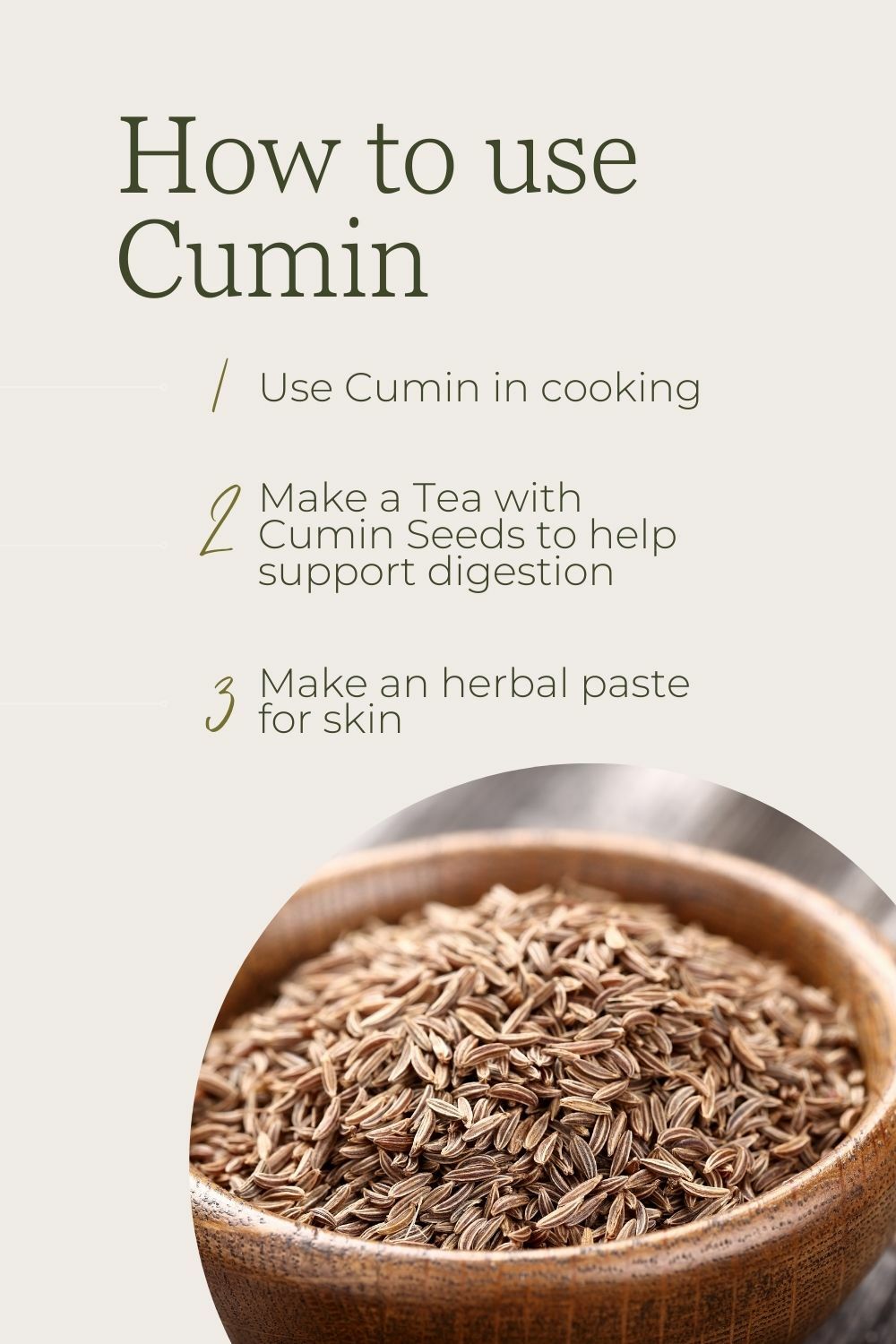Potential Benefits of Cumin
Posted by Molly McConnell on 04-22-2024
Why is cumin always used to cook beans and legumes?
With its robust and savory flavor, cumin makes a great addition to all sorts of recipes.
Beyond the immediate benefit to our taste buds, it may also be delivering benefits to your overall health and wellness.
For starters, cumin is believed to be one of the best herbs for supporting digestion. Have you ever considered why we so often see it paired with beans and legumes, which are otherwise notorious for creating indigestion? You’ll likely notice cumin at the top of your favorite recipes for Mexican-style black beans, Indian dal, and Mediterranean falafel — to name a few! If you’ve ever eaten beans or legumes that weren’t well-spiced with cumin or other similar digestive herbs, you may have suffered the consequences of increased gas and bloating. Have you ever wondered why sometimes a particular food digests with ease, while other times you experience pain and discomfort? It is possible that spices are a contributing factor and may be playing a more important role than you realize in digestive outcomes.
The ancient wisdom of Ayurveda reminds us that adding spices to our foods may support the body’s ability to break down those foods. This means that culinary spices may aid in the actual absorption and assimilation of nutrients. Cumin in particular is believed to be one of the best, but why? To explore this question, we’ll first take a look at what the ancient wisdom of Ayurveda has to say about it, then we’ll explore the science.
The Ayurvedic Perspective on Cumin
Cumin seed, also called Jeera in Hindi and Jiraka Sanskrit, has been a staple spice in the Ayurvedic paradigm for thousands of years. Ayurveda is the ancient healing science of India with more than 5,000 years of case studies proving its efficacy. According to this system, wellness grows when we orient toward balanced living and align ourselves with the rhythms of nature. The Ayurvedic approach focuses on diet, daily routine, and herbs to prevent and alleviate common wellness challenges.
With a deep commitment to understanding how various herbs impact the body and mind, Ayurveda has developed a system for determining the unique qualities that different medicinal plants offer us. Within this system, cumin is considered to be light and drying. These are qualities that stoke digestive fire, causing a stimulating effect that may help digest heavy foods, like breads or dairy.
Cumin exhibits pungent and bitter tastes. Ayurvedically speaking, the bitter taste is believed to trigger the flow of bile and may help support liver function. The pungent taste is believed to bring warmth to the digestive system to encourage more effective breakdown of foods, which may also help promote healthy absorption and elimination of natural toxins.
Cumin, like most pungent herbs, is generally considered to be heating. However, Dr. David Frawley (author of The Yoga of Herbs) uniquely classifies cumin as a cooling pungent. Regardless of its virya (heating or cooling action), Ayurvedic scholars widely agree that cumin is pungent. Even though it may not make your body feel noticeably warmer when you consume it (the way a more overt pungent herb, like cayenne, might), cumin still may have a gentle stimulating effect on the internal organs — particularly the organs of digestion.
Cumin is believed to be balancing for all three Ayurvedic doshas (mind body types), though may increase pitta dosha (the fire element within us) if used in excess.
Potential Benefits of Cumin
Ayurveda tells us that cumin has many potential health benefits, including the ability to aid digestion, but what does modern science have to say about it? In a recent study, extracts of cumin were shown to enhance enzymatic activity of protease, lipase and amylase. Another study found that cumin extract may be effective in improving all IBS symptoms, stating that:
“Abdominal pain, bloating, incomplete defecation, fecal urgency and presence of mucus discharge in stool were statistically significantly decreased during and after treatment with Cumin extract. Stool consistency and defecation frequency were also both statistically significantly improved in patients with constipation dominant pattern of IBS.”
Beyond the powerful implications for digestive support, this small seed may also be used to benefit the skin. Cumin has also been shown to exhibit potent antioxidant activity. It can be used topically (in the form of a paste, oil, or extract) to be absorbed directly through the skin tissue.
How to Use Cumin
The easiest and most common way to get more cumin into your life is to cook with it — especially if you are preparing foods that you think may be difficult for you to digest. When using whole cumin seeds, try toasting them in ghee or olive oil before adding them to your recipe. This will enhance their flavor and may even activate some of their beneficial properties. To toast your cumin seeds, simply heat your oil over medium/high, add your cumin seeds and stir frequently for 30-60 seconds until fragrant. Stay close to make sure they don’t burn!
Whole cumin seeds can also be used to make a slightly savory digestive tea. For this, you will want to steep your ½ - 1 tsp tsp cumin seeds + 1 tsp additional herb(s) of your choice in 16 ounces of hot water for 10-20 minutes. Then, strain and enjoy by sipping slowly before or after a meal.
If you’re curious about using cumin directly on the skin, that is an option too! Classical Ayurveda features cumin in several natural remedies for the skin — including one herbal paste that was traditionally used for scorpion stings!
Discover cumin recipes and remedies here.

Bio
Molly McConnell is a Certified Ayurvedic Practitioner who is committed to cultivating collective wellness. Guided by curiosity, embodied listening, and the rhythms of nature, Molly’s approach to Ayurveda is intentional and intersectional. As the cofounder ofCultivate Balance, she supports purpose-oriented people to come home to their bodies and restore resilience through nourishment, ritual, and routine. For a more immersive experience,Connect with Molly 1:1 or check outThe Reset for Resilience.





